While UX writers are the newer kids on the block, copywriters and content writers have been around for a while.
The three roles are pretty different, though. UX writers, copywriters, and content writers have distinct and different skill sets, mindsets, and functions.
I’m going to drill down and distill the key differences between content writing vs copywriting vs UX writing. That way, you can understand how they’re different, even though they all write copy, so you can pick the right one of these writing jobs.
UX writing vs copywriting vs content writing: Definition
Let's start with the definition of each role, so you can clearly understand how the roles are different:
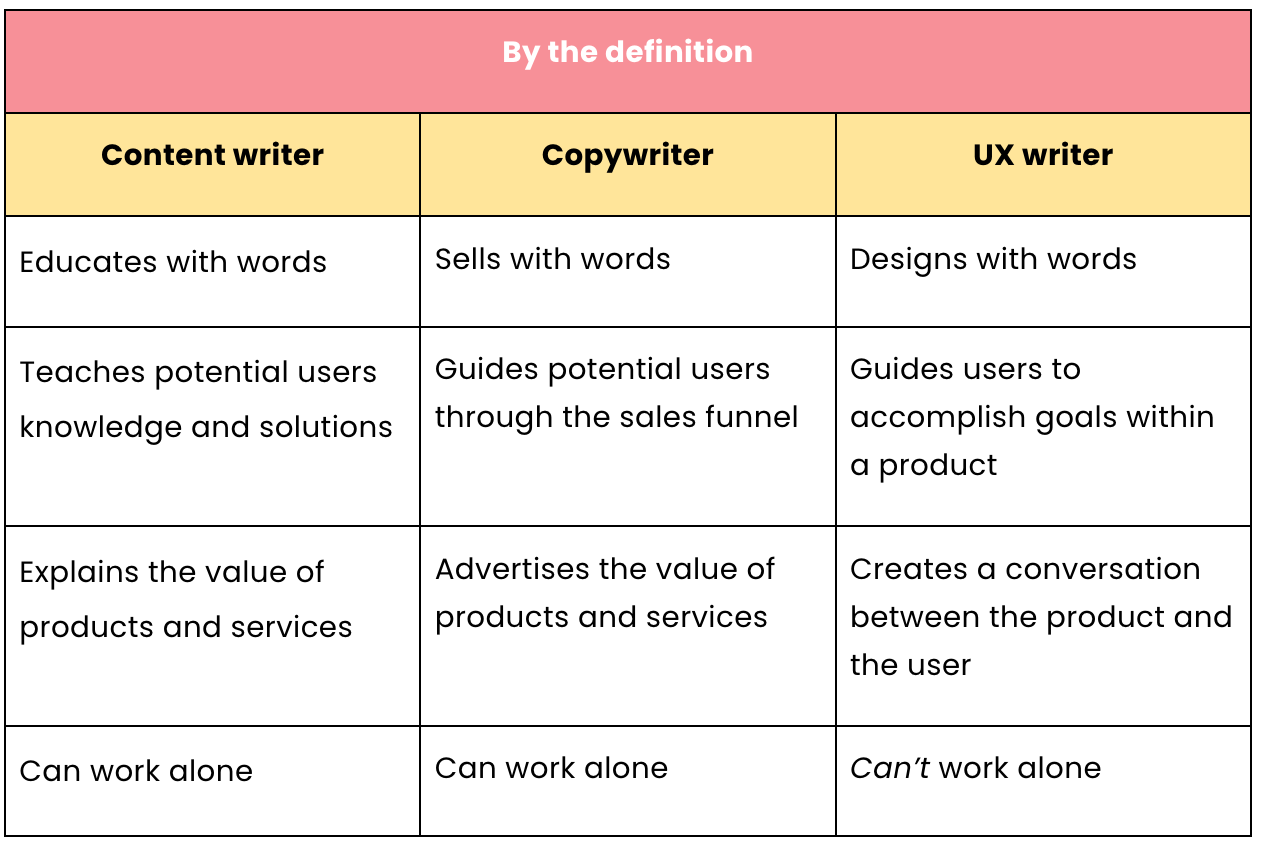
By the definition, content writers, copywriters, and UX writers are quite different. To start with, all three roles use words differently.
For a content writer, the main goal is to educate by using words to teach and explain value.
For copywriters, the main goal is to sell by using words to move potential users through a funnel.
But for UX writers, we use words to design a conversation between the product and the user with the goal of helping them accomplish a goal.
Copywriters and content writers can work alone, while UX writers can’t work alone.
UX writing vs copywriting vs content writing: Deliverable
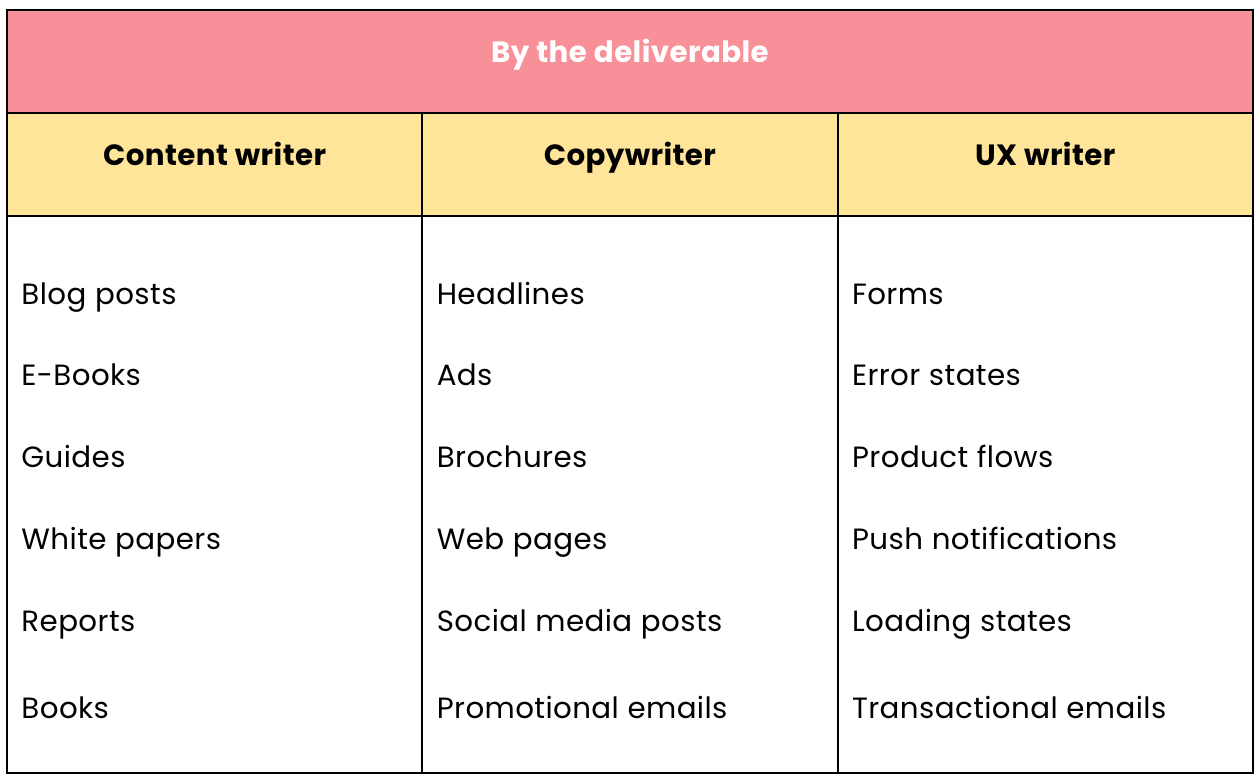
Moving right along, there are some key differences between content writers, copywriters, and UX writers based on the deliverables they produce, or what they make.
Content writers focus on long-form content, like blog posts and books. They write the longest content of all.
Copywriters focus on medium-form and short-form content, like ads and web pages. In collaboration with a brand designer, a copywriter fills in the blanks using paragraphs and sentences.
UX writers focus on microcopy, communicating messages in the most concise way possible in everything from error states to onboarding screens. In an ideal role, UX writers don’t fill in the blanks like a copywriter, but instead collaborate with the product designer on the arrangement of text on the screen.
UX writing vs copywriting vs content writing: Skill set
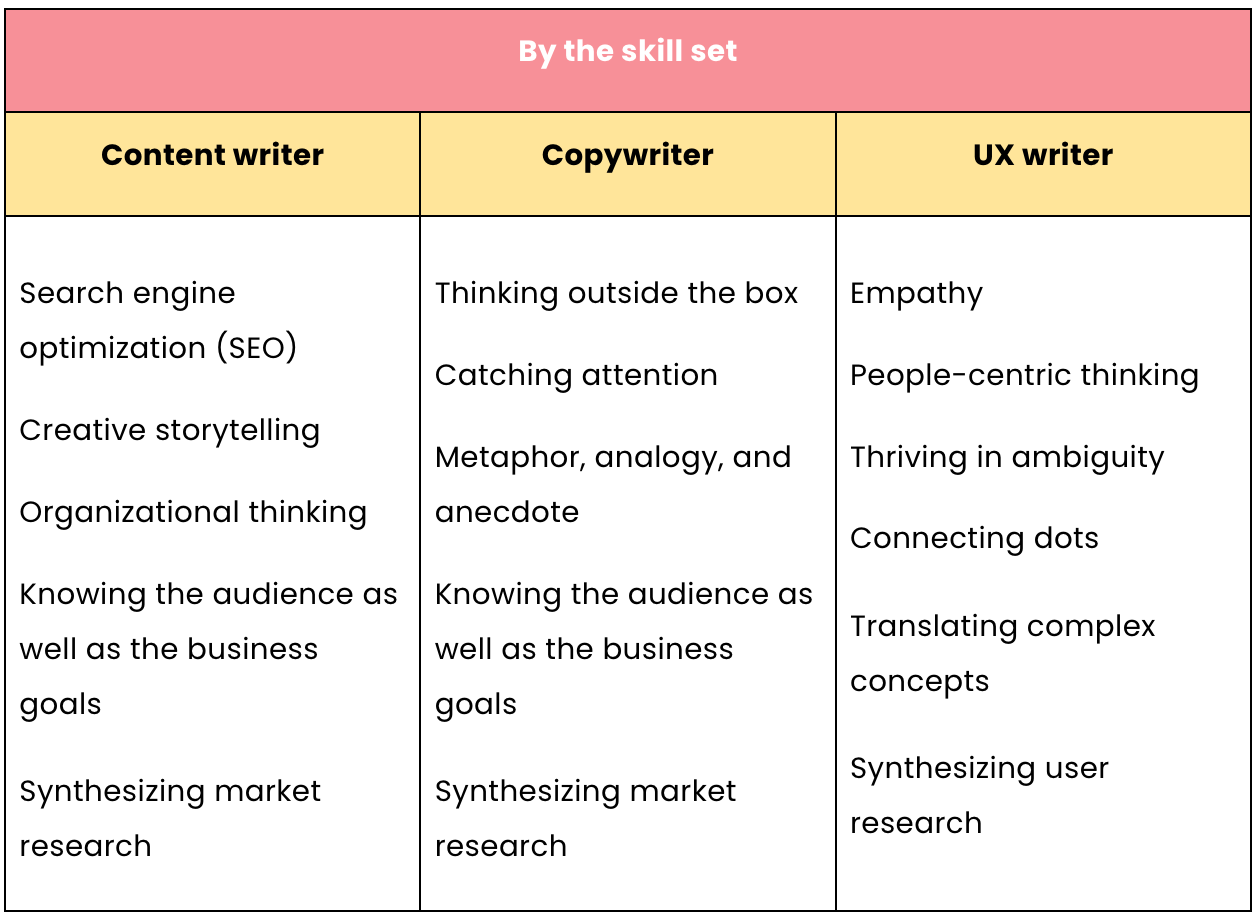
While content writers, copywriters, and UX writers all use words, we have different skill sets that inform how we use those words.
Content writers need to tell a story that resonates with the company’s target audience, so the company hits their business goals. They strategize their content using market research insights and taking SEO into account.
Copywriters are skilled at catching people’s attention by thinking outside the box, so the company hits their business goals. They strategize their copy using market research insights, and they use writing tactics like metaphors, analogies, and anecdotes to write effective copy.
UX writers are deeply empathetic and use people-centric thinking to translate complex concepts into clear, easy-to-use experiences. By connecting the dots uncovered in user research, UX writers write microcopy that clicks with users.
UX writing vs copywriting vs content writing: Strengths
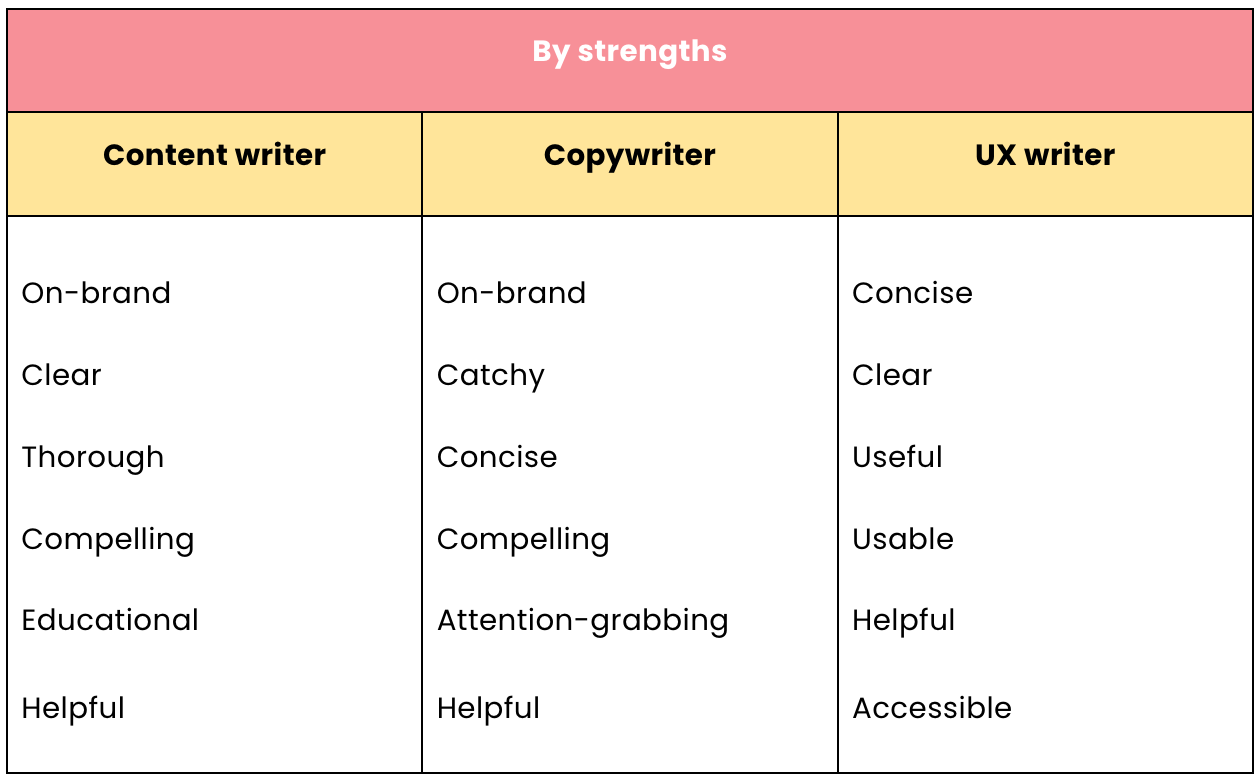
Similar to different skill sets, content writers, copywriters, and UX writers also have different strengths, or superpowers, that help them thrive in their unique and distinct roles.
Content writers excel at writing educational, helpful content that provides clarity through its thoroughness.
Copywriters excel at writing conversion-worthy copy, that’s catchy and compelling, concisely to catch someone’s attention.
UX writers excel at designing clear, useful, and accessible experiences by writing helpful, concise microcopy arranged in a usable and logical manner.
UX writing vs copywriting vs content writing: Stakeholders
Lastly, we need to understand how content writers, copywriters, and UX writers differ based on whom they work with on a day-to-day basis.
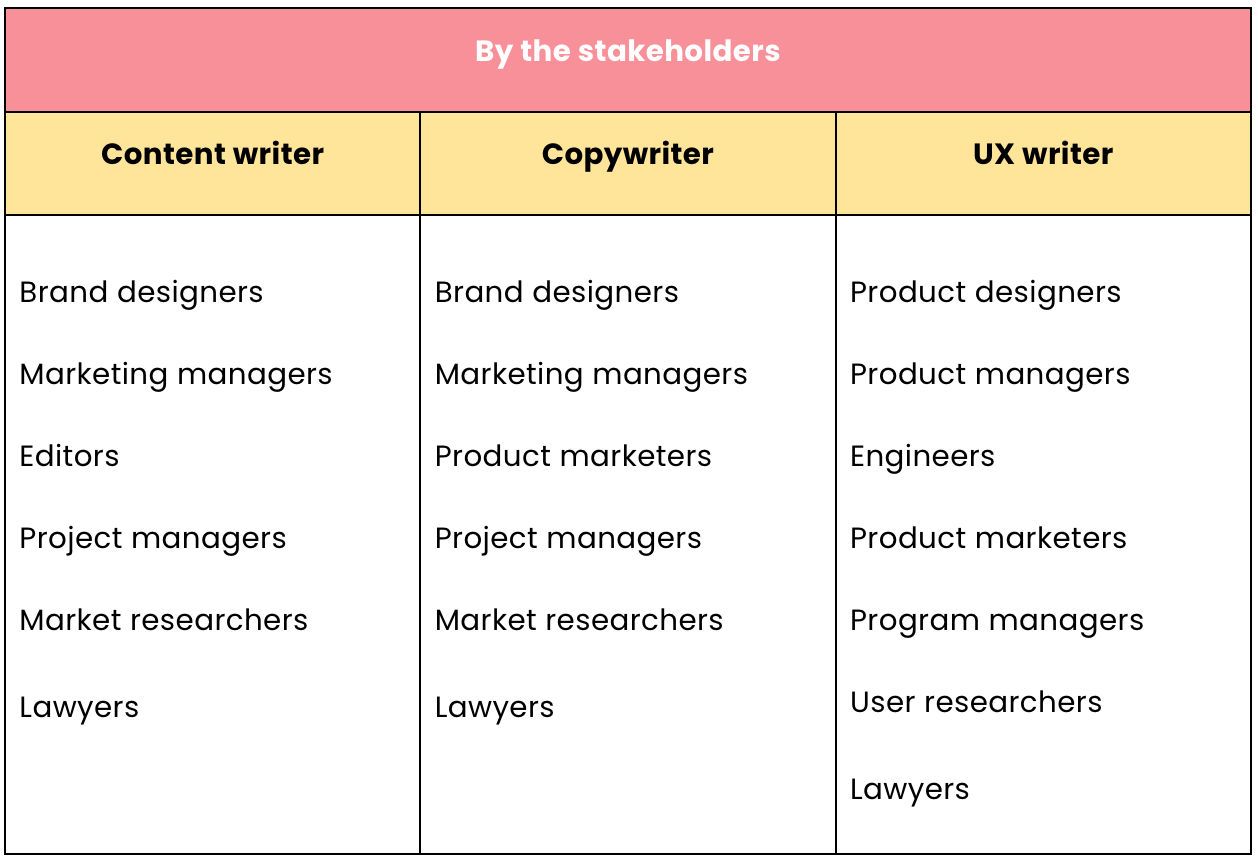
Content writers sit on the marketing team and work mostly independently. They get tasks and feedback from editors, stay on track with the help of project managers and marketing managers, and collaborate with brand designers to create delightful reads. They collaborate with market researchers to write on-point content, and lawyers to make sure they don’t get sued.
Copywriters also sit on the marketing team and work more closely with brand designers to design effective marketing materials. They get tasks from either their creative director or marketing manager, and project managers keep them on track. They also collaborate with market researchers to write on-point copy, and lawyers to make sure they don’t get sued.
UX writers sit on the product design team and work in close partnership with product designers to design user experiences. Product managers cruise direct projects, while program managers keep them on track. They collaborate with engineers to make sure experiences are sent out to the world the way the UX writer designed them. They collaborate with user researchers to design on-point experiences, and lawyers to, again, make sure they don’t get sued.
If there’s one thing to take away here, it’s that you can’t really get around lawyers 🙃
If you’re a copywriter or content writer curious about getting into UX writing, don’t be intimidated by the differences.
I transitioned from content writing and copywriting to UX writing, and while there was a lot to learn, my strengths as a copywriter influenced my strengths as a UX writer.
Many copywriters transition to UX writing, and you definitely can, too.
Happy UX writing 🖖





